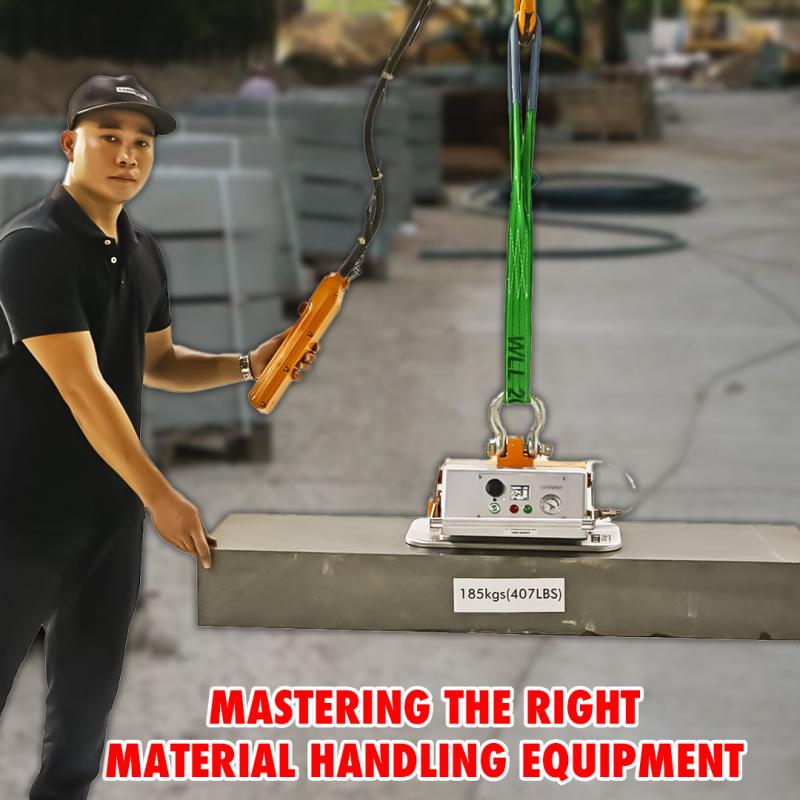



Businesses that invest in top-tier material handling equipment not only streamline processes but also secure significant cost savings and bolster employee satisfaction. In an era where speed, safety, and scalability define competitive advantage, mastering the right tools—from hand pallet trucks to advanced automated guided vehicles—becomes non-negotiable.
Properly selected equipment minimizes the risk of musculoskeletal injuries and accidents. Ergonomic innovations, such as wearables and compliance monitoring, further elevate safety standards—see Safety Innovations in Material Handling: Ergonomics, Wearables, and Compliance.
Automating repetitive moves and optimizing load capacities accelerate throughput. Integrating sensors (IoT) and real-time tracking reduces downtime and maintenance surprises, giving you a true material-handling industry edge.
Well-maintained lifts and conveyors extend equipment lifespan, lowering total cost of ownership. Proactive servicing ensures fewer breakdowns, translating into predictable budgets and fewer emergency repairs.
Every facility has unique demands—understanding the landscape of material handling equipment is the first step toward optimal selection.
Among the simplest yet most versatile, hand pallet trucks excel in narrow aisles and retail spaces. Their cost-effectiveness, ease of use, and low maintenance make them indispensable for light to medium loads.
Powered forklifts lift and transport pallets over long distances. For lifting irregular loads like pipes or beams, consider a Heavy-Duty Forklift Boom. Different powertrains—electric, gas, diesel—adapt to indoor or outdoor environments, offering scalable lifting capacity.
Conveyors automate linear movement:
Belt conveyors for continuous, gentle transport
Roller conveyors for heavy cartons and crates
Chain conveyors for rugged industrial use
Customizable layouts optimize line balancing and minimize manual touches.
AGVs deliver goods autonomously, guided by lasers or markers. Ideal for repetitive routes, they slash labor costs and integrate seamlessly with warehouse management systems.
Automated Storage and Retrieval Systems (AS/RS) pack materials densely while ensuring rapid access. These solutions maximize vertical space and streamline order picking.
Beyond the basics, specialized tools elevate handling of fragile or heavy stone slabs, glass, and blocks.
Vacuum lifters provide secure, non-mechanical grips on smooth surfaces. For heavy stone plates, the Industrial Vacuum Lifter offers adjustable suction and multi-pad configurations. Similarly, a vacuum lifter slab lifter reduces slab breakage and operator strain.
Mechanical lifting clamp designs cater to block handling, concrete beams, and granite slabs. The precision-engineered The Aardwolf Granite Stone Lifting Clamp ensures safe, damage-free elevation. For block-specific tasks, review Best Practices for Block Lifting.
Scissor-action platforms lift loads vertically with stability—ideal for fine adjustments on installation jobs. Explore the scissor clamp for versatile stone and ceramic handling.
Handling large glass panes demands specialized suction-cup designs. The glass lifter equipment combines strong vacuum pads with ergonomic handles for precise placement.
Overhead systems free up floor space. Portable gantry models excel in on-site or rental applications. To understand key differences, see overhead cranes involve and choose between fixed jib arms or mobile gantries. For equipment fundamentals, review gantry crane material handling guidelines.
Securing loads on trucks or trailers is critical. Premium ratchet tie down traps minimize shifting—learn proper techniques in ratchet tie down solutions.
Choosing equipment hinges on:
Load profile (weight, size, fragility)
Environment (indoor/outdoor, temperature, space constraints)
Throughput requirements (batch vs. continuous flow)
Budget & scalability
For a comprehensive guide on system design, check Heavy-Duty Material Handling Equipment Solutions.
Regular servicing and operator training preserve uptime and prevent accidents:
Routine inspections of pads, clamps, and moving parts
Load limit adherence to avoid overstressing equipment
Clear pathways to prevent tripping hazards
PPE enforcement for high-risk tasks
Deepen your safety protocols with insights from safety-first transport strategies.
Stone fabrication demands precision. By integrating tailored material handling equipment, fabricators optimize yard flow and reduce breakage. Examples include:
Deploying Features of Aardwolf Transport Frames – Heavy Duty to move stacked granite slabs safely.
Using a Heavy-duty slab lifter for automatic loading and unloading of truck beds.
Implementing Practical Example of Material Handling Equipment workflows to balance production lines and reduce manual touches.
Applying Best Practices in the Stone Industry for eco-friendly and ergonomic transport strategies.
Value-added services such as consultation, training, and equipment leasing help businesses adapt to evolving demands:
Industrial Material Handling Services: design, installation, and after-sales support
Kerb Stone Solutions for landscapers and municipal projects
Granite slab trolleys solutions for showrooms and fabrication shops .
Advisory on Benefits of Hiring Stone Fabricators to ensure quality installations
Guidance Before Hiring a Granite Countertop contractor
How to Choose the Correct Countertop Fabricator for bespoke kitchen designs
Maintenance of Granite Countertops to preserve shine and longevity
Additionally, explore “Types of Lifting Clamps”, “Suction Cups for Glass”, and an “Introduction to Lifting Solutions” to broaden your operational toolkit.
Emerging trends in the material handling industry include:
IoT-enabled smart equipment for predictive maintenance
Robotics and AI for automated picking and sorting
Eco-friendly drives (battery, electric) to meet sustainability goals
Staying ahead means continuously evaluating new technologies and aligning them with your business objectives.
Mastering material handling equips businesses to handle complexity, boost productivity, and safeguard workers. Whether you’re investing in basic pallet movers or advanced vacuum lifters, the right selection—backed by robust safety and maintenance practices—pays dividends in efficiency and cost reduction. By embracing specialized solutions, such as the Heavy-Duty Forklift Boom, Industrial Vacuum Lifter, and ergonomic scissor lifter, organizations can tailor their workflows for maximum throughput. Invest today in comprehensive material-handling equipment strategies—your operation’s resilience and competitive edge depend on it.
Sign up to receive the latest info on new Aardwolf products, special offers and more.
By signing up you agree to receive emails from Aardwolf with news, special offers, promotions and other information. You can unsubscribe at any time.